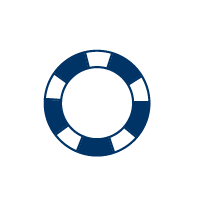The Luck of the Irish and lucky four-leaf clovers: where do they come from?
Everyone has heard of the expression ‘The Luck of the Irish’. It is a common phrase that has been passed between lands and generations, and you have no doubt even used it yourself before. But have you ever thought about where it comes from? And are the Irish really luckier than the rest of us?
Origins of the Luck of the Irish

There is no one clear answer for the origins of this age-old expression. Some say that it is an old mining phrase from the 19th century, where just by chance, the successful miners of the Gold and Silver Rush happened to be Irish or Irish American. Over time, the association of Irish miners finding the fortunes led to this expression which has become widely used today.
There are also questions of its origin stemming back to Celtic mythology. The Emerald Isle is home to many myths and legends with tales of mystical creatures roaming the land, and one of these is the legendary leprechaun. Often known to be a lucky symbol of Ireland, the leprechaun is a little man in green who can be found at the end of a rainbow, guarding his pot of gold. Perhaps the phrase is related to this myth?
Why does a four-leaf clover or shamrock bring luck?

The four-leaf clover and shamrock are also symbols of Ireland that are related to luck. These green symbols of luck and Ireland are similar to each other but are not the same, with over 300 variants of clover, and 30 of shamrock. You will definitely need the luck of the Irish if on the hunt for a four-leaf clover or shamrock. These rare little four-leafed plants can be found in around one in every 10,000 clovers or shamrocks, and if you do manage to discover one, it is said that you will have an abundance of luck.
Origins for the lucky shamrock stem from the patron saint of Ireland himself, St Patrick. Born in Wales, St Patrick was captured at the young age of 16 by raiders, made a slave and held for six long years in Ireland. He then converted to Christianity and returned to Ireland to convert the Irish Pagans – especially in the northern half of the country. He used the shamrock to explain the Holy Trinity – The Father, Son and Holy Ghost, but it also stands for Faith, Hope and Love with the additional leaf standing for Luck.
St Patrick and the River Shannon

If you want to visit Ireland on a boating holiday to soak up some of this folklore, then you will find it on the River Shannon. Legend says that St Patrick drove out all the snakes in Ireland, but the last serpent was finally cast out along the waters of the Shannon. It is thought that St Patrick arrived at the river to be stopped by this large snake which had allegedly twisted its way up from the sea. St Patrick then caught the serpent and chained it to where the River Shannon meets at three points. You might not see any remnants of a great serpent when on a boating holiday on the Shannon, but standing on the deck of your cruiser and staring at where the green shores meet the glassy water, it is easy to imagine such a scene taking place there.
The luck of the Irish can be felt on any visit to this small country with a lot of charm. Home to some of the friendliest people you could meet, the Irish have seen their fair share of adversity and yet continue to smile. Their symbol of luck is infectious, although we’re still waiting to find that lucky shamrock…
Lucky shamrock spinach and parmesan soda bread

To get into the Irish spirit, why not put your baking skills to the test by baking a spinach and parmesan lucky shamrock? And this bread is green! More than a simple colouring gimmick, the addition of spinach and parmesan will give a lovely flavour to the bread.
Soda bread is one of the most famous Irish food exports and with good reason. Not only is it very easy to make, but it’s also very quick. The use of bicarbonate soda as a raising agent means no proving time is needed. Count 5 to 10 minutes to get your dough ready and 30 minutes cooking time.
Ingredients
- 190g wholemeal bread flour
- 170g plain flour
- 300ml / 315g buttermilk
- 50g spinach (washed and ready to eat)
- 30g grated parmesan
- 2 garlic cloves
- 1 tsp salt
- 1 tsp bicarbonate soda
How to make our Lucky Shamrock soda bread
1- Preheat the oven at 180°(Celsius).
2- In a bowl, mix the flour, salt & bicarbonate soda.
3- Using a food mixer, blend the spinach, buttermilk, crushed garlic and parmesan.
4- Add the buttermilk preparation to the dry ingredients and knead until all the ingredients are mixed. Do not over-knead the dough.
5- Place the dough on a baking tray lined with greaseproof paper and shape into a four-leaf shamrock
6- Bake for 30 minutes or until nice and golden
7- Enjoy with your favourite meal. In the spirit or Irish colours, we recommend pumpkin soup for a warming lunch!
Soda bread tips
If you haven’t got any buttermilk in the fridge, you can substitute it with the following:
- 300ml milk and 1.5 tbsp lemon juice or vinegar
- 190g plain yoghurt and 110ml milk or water
If the dough is a bit dry after adding the buttermilk mix, add in a little milk.
Photo credits: © Tourism Ireland and © Holger Leue




